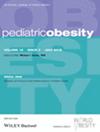Maternal pre-pregnancy body mass index and offspring with overweight/obesity at preschool age: The possible role of epigenome-wide DNA methylation changes in cord blood
Abstract
Background
Epigenome-wide association studies have identified some DNA methylation sites associated with body mass index (BMI) or obesity. Studies in the Asian population are lacking.
Objective
To examine the association of cord blood genome-wide DNA methylation (GWDm) changes with maternal pre-pregnancy BMI and children's BMI-z score at preschool age. Additionally, we also explored the genome-wide differentially methylated regions and differentially methylated probes between preschoolers with overweight/obesity and normal-weight counterparts.
Methods
This two-stage study design included (1) a GWDm analysis of 30 mother–child pairs from 633 participants of the Zhuhai birth cohort with data on newborn cord blood, maternal pre-pregnancy BMI, and children's BMI at 3 years of age; and (2) a targeted validation analysis of the cord blood of ten children with overweight/obesity and ten matched controls to validate the CpG sites.
Results
In the first stage, no significant CpG sites were found to be associated with children's BMI-z score at preschool age after FDR correction with the p-values of the CpG sites in FOXN3 (cg23501836) and ZNF264 (cg27437574) being close to 1 × 10−6. In the second stage, a significant difference of CpG sites in AHRR (chr5:355067-355068) and FOXN3 (chr14: 89630264-89630272 and chr14: 89630387-89630388) was found between the ten children with overweight/obesity and ten controls (p < 0.05). The CpG sites in FOXN3 (chr14:89630264-89630272 and chr14:89630295-89630296) and ZNF264 (chr19: 57703104-57703107 and chr19: 57703301-57703307) were associated with children's BMI-z score; and the CpG sites in FOXN3 (chr14: 89630264-89630272 and chr14: 89630387-89630388) were associated with maternal pre-pregnancy BMI.
Conclusions
DNA methylation in FOXN3 and AHRR is associated with overweight/obesity in preschool-aged children, and the methylation in FOXN3 and ZNF264 might be associated with children's BMI-z score. FOXN3 methylation may be associated with maternal pre-pregnancy BMI, suggesting its potential role in the children's BMI-z score or overweight/obesity. Our results provide novel insights into the mechanisms of children's obesity.

 求助内容:
求助内容: 应助结果提醒方式:
应助结果提醒方式:


